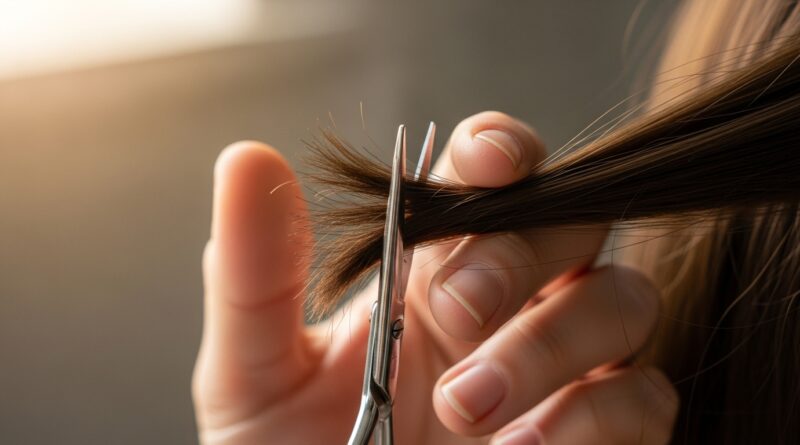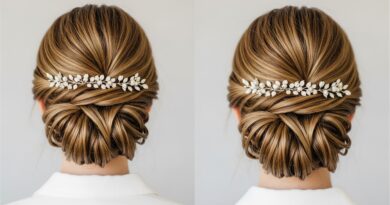How to Get soft cut Hair That Looks Effortless (But Isn’t)
You know the look. It’s the hair you see on your favorite French-girl influencer, the actress running errands in paparazzi photos, or that one friend who always seems to have perfect, touchable hair without ever trying. It’s not blunt, it’s not overly layered, and it certainly doesn’t look like it just left the salon. It’s soft, it has movement, and it looks utterly effortless.
But here’s the secret they never tell you: that perfectly undone, soft-cut hair is almost never an accident. It’s the result of a highly intentional haircutting technique, a specific conversation with your stylist, and the right at-home care. The “effortless” look, ironically, requires a bit of effort to achieve.
This isn’t just another haircut; it’s a philosophy. It’s about creating shape that respects your hair’s natural texture, building in movement so it falls perfectly every time, and saying goodbye to harsh, helmet-like lines. Ready to unlock the secret? Let’s dive into the world of the soft cut.
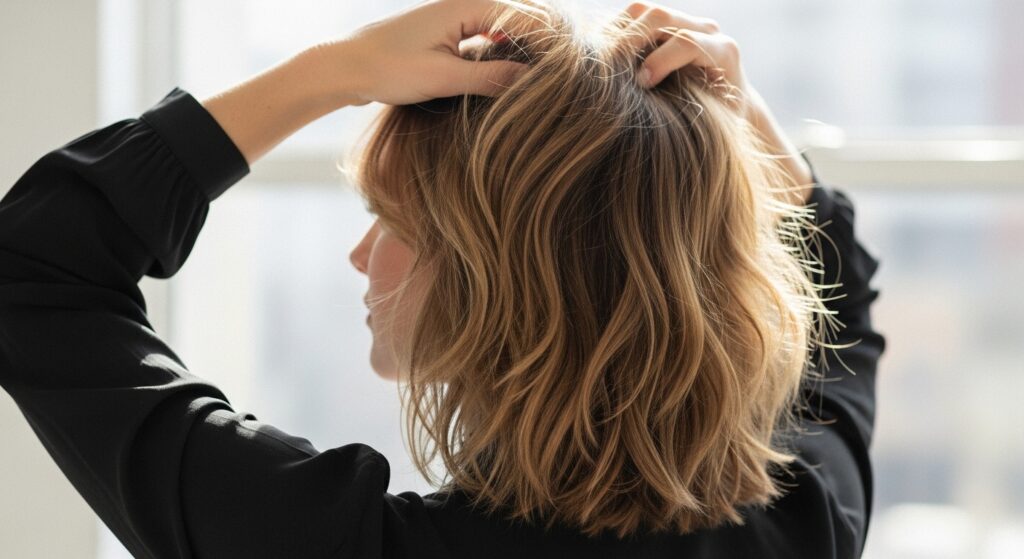
What Exactly Is a “Soft Cut”?
At its core, a soft cut is a haircutting technique that prioritizes texture, softness, and seamless blending over precise, geometric lines. Instead of cutting the hair in a straight, solid line, stylists use methods like point cutting, feathering, and notching to create a lived-in, broken-up edge. This removes weight without removing length, allowing the hair to move and fall in a more organic, natural way.
Think of it as the difference between a solid block of marble and a piece of sea glass. The marble is sharp, defined, and geometric. The sea glass is soft, smooth, with worn edges and a unique shape formed by its environment. A soft cut aims to make your hair resemble the sea glass—uniquely shaped by its natural texture and beautifully worn-in.
The key characteristics of soft-cut hair are:
Lived-in Texture: It never looks freshly chopped. It has a natural, almost second-day texture built right into the cut.
Seamless Blending: There are no harsh lines of demarcation between layers. Everything flows together.
Effortless Movement: The hair swings, moves, and falls back into place naturally because the weight has been strategically removed.
Adaptability: A great soft cut works with your natural texture, whether it’s pin-straight, wavy, or curly.

The Salon Conversation: How to Ask Your Stylist for a Soft Cut
Walking into a salon and asking for “soft hair” might not get you the results you’re dreaming of. You need to be specific and use the right language to ensure you and your stylist are on the same page. This is the most crucial step in the entire process.
Ditch the vague terms and try these phrases instead:
Instead of saying “I want layers,” try: “I’d like some long, blended layers to add movement and remove weight, but I don’t want them to be chunky or visible.”
Instead of “I want texture,” try: “Can we use texturizing techniques like point cutting to break up the ends and make my hair look less perfect?”
Instead of “Just a trim,” try: “I’d like a shape-up that maintains my length but softens the overall silhouette. Let’s focus on the shape rather than just taking off length.”
Come prepared with visual aids. A picture is worth a thousand words. Search for terms like “lived-in haircut,” “effortless layers,” “soft shag,” “French girl bob,” or “broken-up ends.” Look for photos where the hair has clear dimension and movement but doesn’t look overly styled. Show these to your stylist and point out exactly what you like about them.
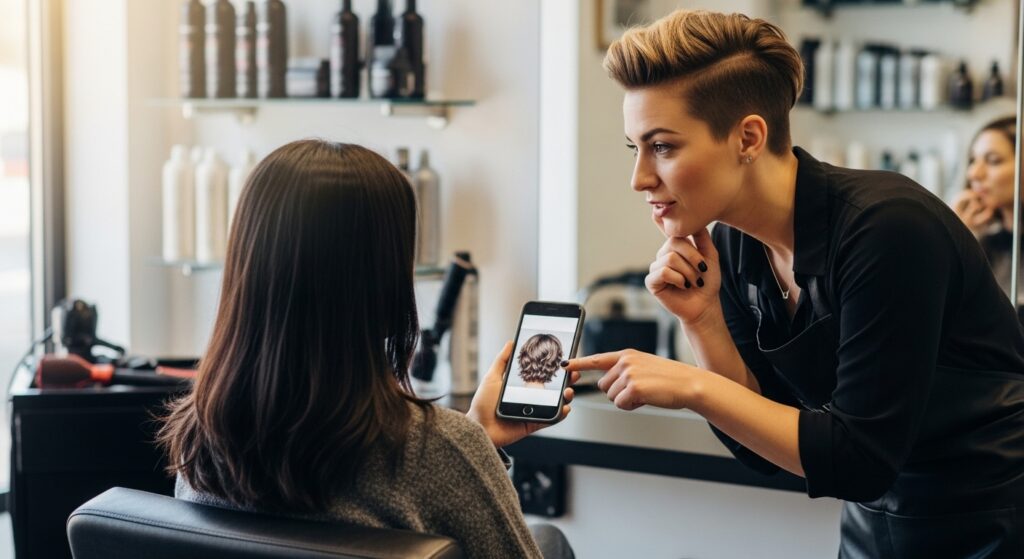
The Magic is in the Method: Key Haircutting Techniques
So, what is your stylist actually doing to create this magic? It’s less about the overall shape and more about the finishing techniques. Here are the behind-the-chair secrets they’re using.
Point Cutting: This is the MVP of the soft cut. Instead of cutting straight across, the stylist holds the scissors vertically and makes small, upward-pointed cuts into the ends of the hair. This creates a feathery, soft edge that eliminates any harsh lines and allows for seamless blending between layers.
Notching: A more aggressive version of point cutting, notching involves taking small, targeted sections and making deeper “notches” into the hair to create more pronounced texture and piecey-ness. It’s fantastic for removing bulk and creating that modern, undone look.
Slide Cutting (or Slithering): The stylist gently closes the scissors and slides them down a section of hair. This technique removes weight and internal bulk from the inside of the haircut, rather than just at the ends. It’s what gives the hair that incredible swing and fluid motion.
Razor Cutting: When used by a skilled professional, a razor can create unparalleled softness and texture. It slices the hair on an angle, creating a finer, more feathered end than scissors can achieve. It’s particularly good for fine hair that can be weighed down by a scissor cut.
It’s important to note that a soft cut often involves a combination of these techniques. Your stylist might use a classic scissor-over-comb method to build the initial shape and then meticulously go in with point cutting and slide cutting to add the all-important softness and movement.
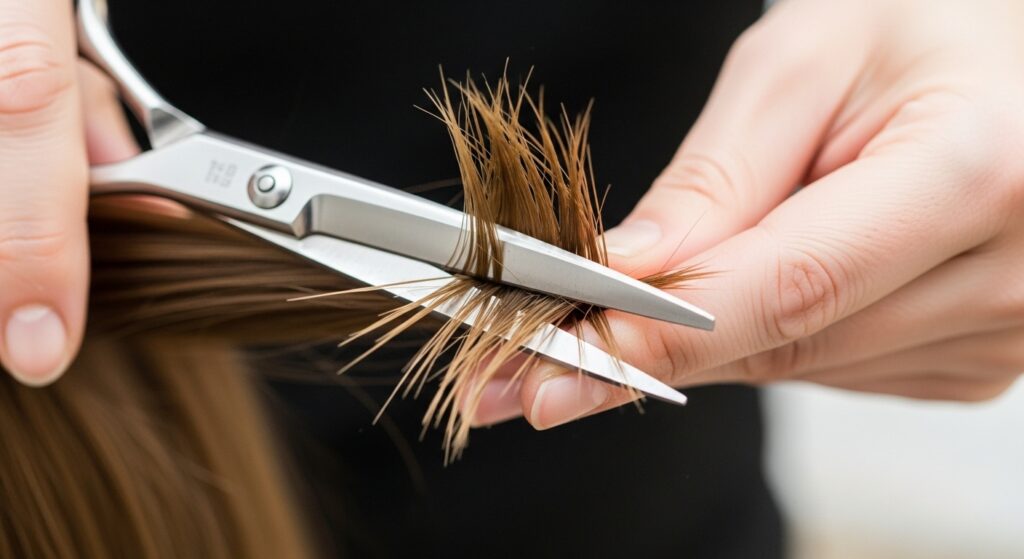
Styling Your Soft Cut for Maximum “Effortless” Effect
You’ve left the salon with the perfect soft cut. Now, how do you maintain that look at home? The goal is to enhance the texture and movement, not flatten it with heavy products or over-styling.
Embrace Texture Sprays and Sea Salts: These are your new best friends. A light mist of texturizing spray or sea salt spray at the roots and mid-lengths will add grit, body, and that perfectly undone feel. Scrunch it into damp or dry hair to awaken your natural wave and create separation.
Ditch the Round Brush (Sometimes): While a round brush can create beautiful volume, it can also create a too-smooth, “done” look. For everyday effortless style, try diffusing your hair or letting it air dry. Use your fingers to tousle the roots as it dries to encourage natural volume.
The Power of the “Plopping” Method for Wavy Hair: If you have waves or curls, “plopping” is a game-changer. After applying your stylers, flip your hair over and place it onto a cotton t-shirt or microfiber towel, then wrap it up. This encourages incredible root volume and enhances your natural wave pattern without frizz.
Strategic Air-Drying: For a truly effortless look, master the art of air-drying. Apply a lightweight leave-in conditioner or curl cream to damp hair, scrunch gently, and then leave it alone. As it dries, you can scrunch it again to break up the cast and reveal the beautiful, soft texture built into your cut.
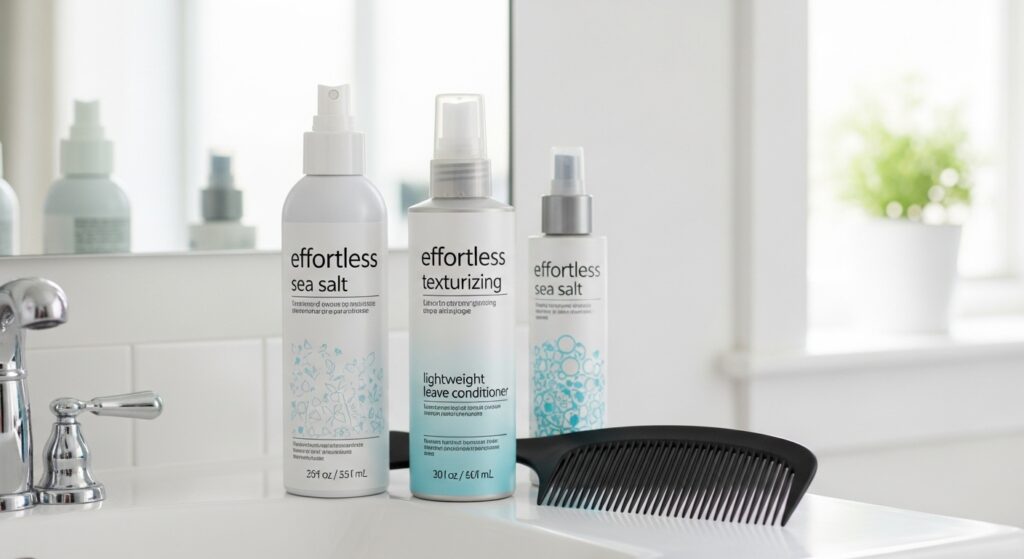
Is a Soft Cut Right for Your Hair Type?
The beautiful thing about the soft cut is its incredible versatility. It’s not a one-size-fits-all formula, but a customizable approach that can be tailored to anyone.
For Fine Hair: A soft cut is a miracle worker. By removing internal weight and creating texture, it instantly makes fine hair look thicker and more voluminous. The key is to avoid over-thinning, which can make hair look sparse. Strategic point cutting and slide cutting are perfect.
For Thick or Coarse Hair: This hair type can often feel heavy and unmanageable. A soft cut is ideal for removing bulk and weight without sacrificing length. Notching and razor cutting can help tame the density and introduce movement, preventing the dreaded “triangle” shape.
For Wavy and Curly Hair: Soft cutting techniques are the gold standard for curly hair. They help define the natural curl pattern by removing weight that can pull curls straight, resulting in more bounce and spring. The goal is to shape the curls, not fight them.
For Straight Hair: Even pin-straight hair benefits immensely. A soft cut prevents straight hair from looking flat or helmet-like. The textured ends and subtle layers create the illusion of depth and movement, making straight hair look dynamic and interesting.
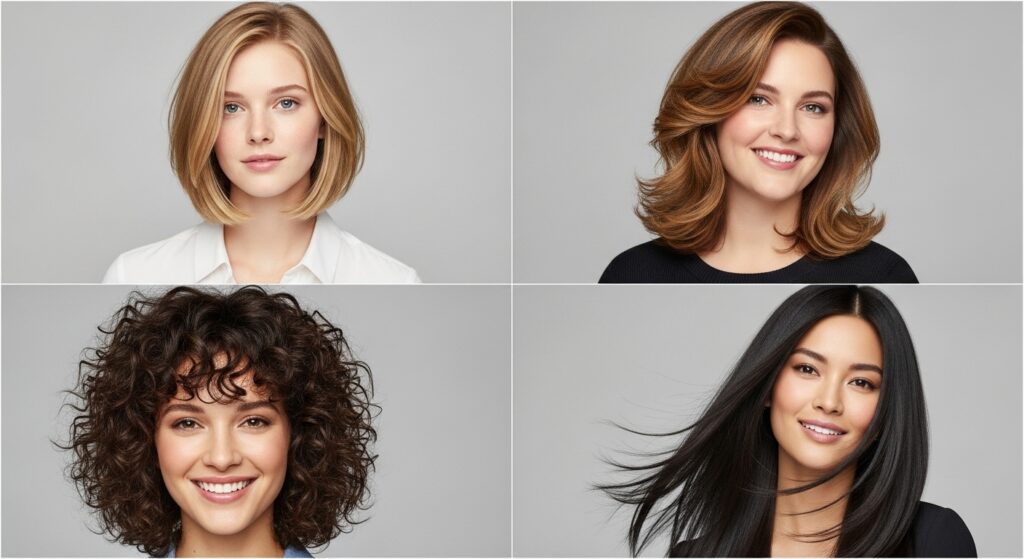
Maintaining the Magic: Your Between-Cuts Care Routine
To keep your soft cut looking its best, a little maintenance goes a long way. The grow-out phase is notoriously graceful with this style, but you can extend its life with smart habits.
Regular Trims are Non-Negotiable: The irony of a low-maintenance style is that it requires consistent upkeep to stay that way. Aim for a trim every 8-12 weeks. This prevents the textured ends from becoming split and frayed, which can make the hair look messy instead of intentionally undone.
Invest in a Good Leave-In Conditioner: Texturizing techniques can make the ends of your hair more susceptible to dryness. A lightweight leave-in conditioner will keep hair hydrated, smooth, and frizz-free without weighing down the texture.
Protect Your Hair from Heat: Even though this style embraces air-drying, you’ll likely use hot tools occasionally. Always use a heat protectant spray. When you do blow-dry or use a curling iron, opt for lower heat settings and try to create loose, messy waves rather than tight, uniform curls to complement the cut’s philosophy.
Refresh, Don’t Re-wash: Over-washing strips natural oils and can flatten your texture. On non-wash days, revive your style with a dry shampoo at the roots for volume and a light spritz of texturizing spray on the ends to redefine the piecey-ness.
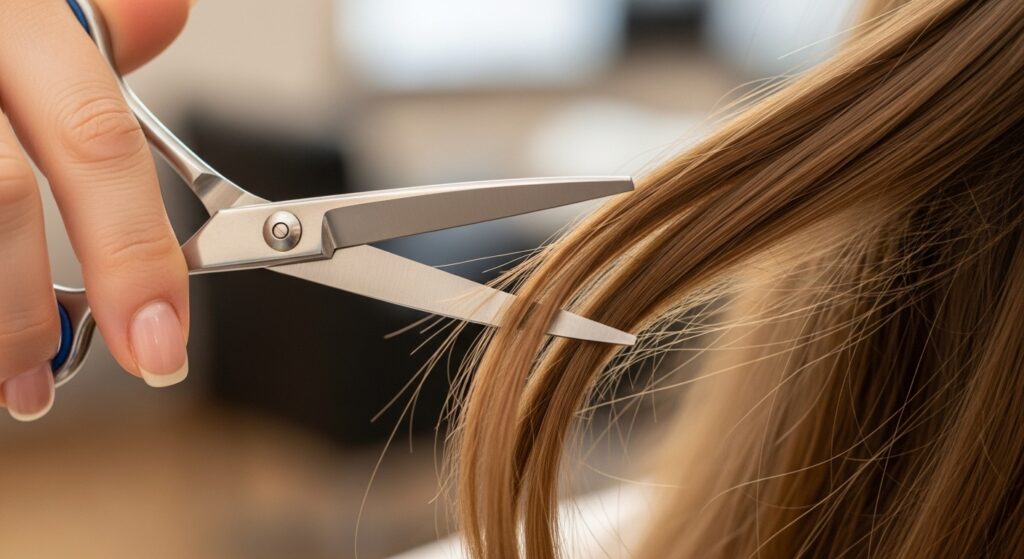
Embrace the Art of Effortless Style
Getting the soft, effortless hair of your dreams is less about a single magical product and more about a strategic, intelligent haircut. It’s a collaboration between you and your stylist, a understanding of technique, and a commitment to a less-is-more styling approach.
It’s the haircut that does the work for you. It’s designed to look better as the days go by, to fall perfectly even when you’ve just rolled out of bed, and to frame your face in a soft, forgiving way. So, book that salon appointment, arm yourself with the right words and pictures, and get ready to invest in a cut that looks like you did nothing at all—precisely because it’s been so expertly crafted.
